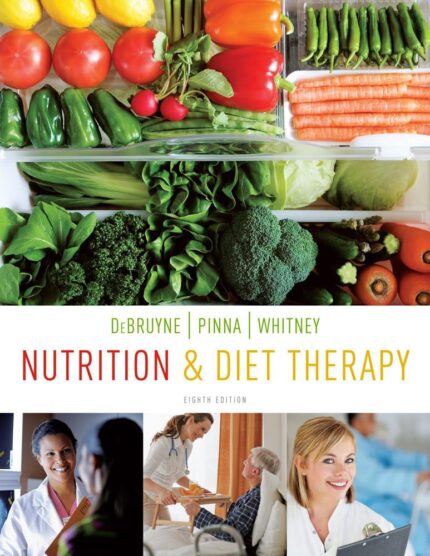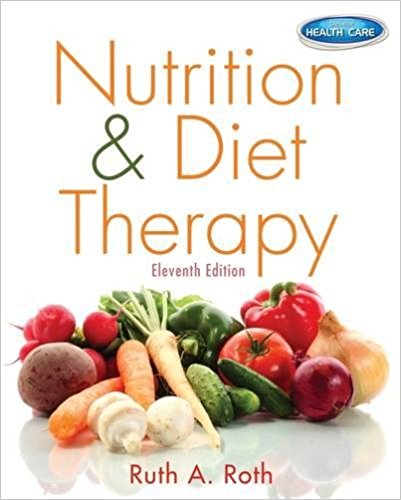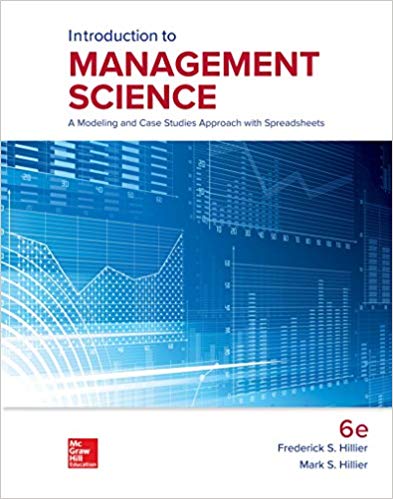Nutrition and Diet Therapy 9th Edition by Linda Kelley DeBruyne – Test Bank
Chapter 3
|
1. A triglyceride contains more than three fatty acids. a. True b. False ANSWER: False DIFFICULTY: Bloom’s: Understand REFERENCES: 3.2 The Chemist’s View of Lipids LEARNING OBJECTIVES: 16.03.3.2 – Compare the chemical makeup and physical properties of saturated fats, monounsaturated fats, polyunsaturated fats, phospholipids, and sterols. |
|
2. High intakes of saturated and trans fat increase the risk of heart disease by lowering LDL and raising HDL cholesterol. a. True b. False ANSWER: False DIFFICULTY: Bloom’s: Understand REFERENCES: 3.2 The Chemist’s View of Lipids LEARNING OBJECTIVES: 16.03.3.2 – Compare the chemical makeup and physical properties of saturated fats, monounsaturated fats, polyunsaturated fats, phospholipids, and sterols. |
|
3. Not all fatty acids have the same cholesterol-raising effect. a. True b. False ANSWER: True DIFFICULTY: Bloom’s: Understand REFERENCES: 3.2 The Chemist’s View of Lipids LEARNING OBJECTIVES: 16.03.3.2 – Compare the chemical makeup and physical properties of saturated fats, monounsaturated fats, polyunsaturated fats, phospholipids, and sterols. |
|
4. Foods that are thought of as protein-rich, such as meat, may actually contain more fat energy than protein energy. a. True b. False ANSWER: True DIFFICULTY: Bloom’s: Understand REFERENCES: 3.4 Fats in Foods LEARNING OBJECTIVES: 16.03.3.4 – Identify the roles of fats in foods and list sources of solid fats and unsaturated fats. |
|
5. It is possible to consume too little fat. a. True b. False ANSWER: True DIFFICULTY: Bloom’s: Understand REFERENCES: 3.4 Fats in Foods LEARNING OBJECTIVES: 16.03.3.4 – Identify the roles of fats in foods and list sources of solid fats and unsaturated fats. |
|
6. Research has shown that fat substitutes are always effective at promoting weight loss. a. True b. False ANSWER: False DIFFICULTY: Bloom’s: Understand REFERENCES: 3.4 Fats in Foods LEARNING OBJECTIVES: 16.03.3.4 – Identify the roles of fats in foods and list sources of solid fats and unsaturated fats. |
|
7. Removing fat from foods does not remove energy. a. True b. False ANSWER: False DIFFICULTY: Bloom’s: Remember REFERENCES: 3.4 Fats in Foods LEARNING OBJECTIVES: 16.03.3.4 – Identify the roles of fats in foods and list sources of solid fats and unsaturated fats. |
|
8. Olestra is fully absorbed by the body during digestion. a. True b. False ANSWER: False DIFFICULTY: Bloom’s: Understand REFERENCES: 3.4 Fats in Foods LEARNING OBJECTIVES: 16.03.3.4 – Identify the roles of fats in foods and list sources of solid fats and unsaturated fats. |
|
9. Olive oil is known to help protect against heart disease. a. True b. False ANSWER: True DIFFICULTY: Bloom’s: Understand REFERENCES: 3.5 Nutrition in Practice: Figuring out Fats LEARNING OBJECTIVES: 16.03.3.5 – Identify which fats support health and which may impair it. |
|
10. Adipose cells store nothing but glucose. a. True b. False ANSWER: False DIFFICULTY: Bloom’s: Understand REFERENCES: 3.1 Roles of Body Fat LEARNING OBJECTIVES: 16.03.3.1 – Identify the major roles of fat in the body. |
|
Multiple Choice |
|
11. Fat functions in the body to ____. a. provide energy b. regulate body processes c. build muscle tissue d. synthesize enzymes e. transport oxygen ANSWER: a DIFFICULTY: Bloom’s: Understand REFERENCES: 3.1 Roles of Body Fat LEARNING OBJECTIVES: 16.03.3.1 – Identify the major roles of fat in the body. |
|
12. The body fuel that can be stored in nearly unlimited amounts is ____. a. glycogen b. fat c. protein d. glucose e. creatine ANSWER: b DIFFICULTY: Bloom’s: Understand REFERENCES: 3.1 Roles of Body Fat LEARNING OBJECTIVES: 16.03.3.1 – Identify the major roles of fat in the body. |
|
13. Which is a function of fat? a. It provides insulation to the body. b. It is an essential component of DNA. c. It is the best source of energy for the brain. d. It is the storage form of energy in the muscles. e. It helps eliminate excess fat-soluble vitamins. ANSWER: a DIFFICULTY: Bloom’s: Understand REFERENCES: 3.1 Roles of Body Fat LEARNING OBJECTIVES: 16.03.3.1 – Identify the major roles of fat in the body. |
|
14. Which is the predominant fat in the diet and in the body? a. triglycerides b. cholesterol c. phospholipids d. lecithins e. ketones ANSWER: a DIFFICULTY: Bloom’s: Understand REFERENCES: 3.2 The Chemist’s View of Lipids LEARNING OBJECTIVES: 16.03.3.2 – Compare the chemical makeup and physical properties of saturated fats, monounsaturated fats, polyunsaturated fats, phospholipids, and sterols. |
|
15. The compound that forms the backbone of triglycerides is called ____. a. glycerol b. fatty acid c. acetic acid d. glycogen e. adipose ANSWER: a DIFFICULTY: Bloom’s: Understand REFERENCES: 3.2 The Chemist’s View of Lipids LEARNING OBJECTIVES: 16.03.3.2 – Compare the chemical makeup and physical properties of saturated fats, monounsaturated fats, polyunsaturated fats, phospholipids, and sterols. |
|
16. A three carbon molecule present in triglycerides is ____. a. glycerol b. glycogen c. glucose d. sucrose e. lactose ANSWER: a DIFFICULTY: Bloom’s: Understand REFERENCES: 3.2 The Chemist’s View of Lipids LEARNING OBJECTIVES: 16.03.3.2 – Compare the chemical makeup and physical properties of saturated fats, monounsaturated fats, polyunsaturated fats, phospholipids, and sterols. |
|
17. The term “saturated fatty acid” means that ____. a. its carbon chains contain fewer than ten carbons b. the fat lacks glycerol c. each carbon is filled to capacity with hydrogen atoms d. the fat is solid at room temperature e. the fat comes from animal sources ANSWER: c DIFFICULTY: Bloom’s: Understand REFERENCES: 3.2 The Chemist’s View of Lipids LEARNING OBJECTIVES: 16.03.3.2 – Compare the chemical makeup and physical properties of saturated fats, monounsaturated fats, polyunsaturated fats, phospholipids, and sterols. |














Reviews
There are no reviews yet.